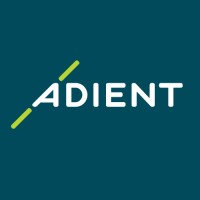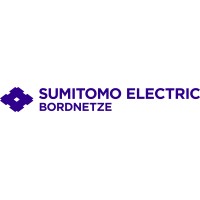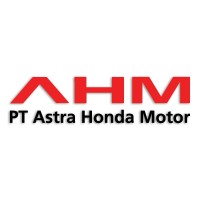Company Cyber Security Posture
NANA
NA Company Details
NA
NA
NA
NA
NA
NA
Scan still pending
NA
NA
Between 200 and 800
This score is AI-generated and less favored by cyber insurers, who prefer the TPRM score.
 NA Global Score
NA Global Score.png)

Company Scoring based on AI Models
| Model Name | Date | Description | Current Score Difference | Score |
|---|---|---|---|---|
| AVERAGE-Industry | 03-12-2025 | This score represents the average cybersecurity rating of companies already scanned within the same industry. It provides a benchmark to compare an individual company's security posture against its industry peers. | N/A | Between 200 and 800 |
Company Cyber Security News & History
| Entity | Type | Severity | Impact | Seen | Url ID | Details | View |
|---|
Company Subsidiaries

NA
Access Data Using Our API

Get company history
.png)
NA Cyber Security News
Maruti Suzuki appoints Head of Digital Enterprise, Cybersecurity
Maruti Suzuki India Limited has announced the appointment of Dr. Tapan Sahoo as the Head of Digital Enterprise (DE) and Information & Cyber ...
Maruti Suzuki Elevates Dr. Tapan Sahoo to Head Digital Enterprise and Cybersecurity
Automotive manufacturer names Dr. Tapan Sahoo to lead digital transformation efforts, overseeing technology strategy and cybersecurity ...
SHOW REVIEW: Cross-industry collaboration, SDVs, ADAS, cybersecurity and vehicle safety at Automotive Testing Expo India 2025
“Automotive Testing Expo India was a very interesting and insightful event, wherein the leading voices from the automotive industry and ...
Cybersecurity in financial sector: How AI can prevent data breaches; ClearTax launches AI-powered tools for ITR filing; Tech & more
ClearTax has introduced AI-powered tools designed to simplify the ITR filing process for taxpayers in India.
Dr Tapan Sahoo to lead Maruti Suzuki’s digital, cybersecurity vision
A seasoned leader in automotive technology. With over 33 years in the industry, Dr Sahoo has played a key role in Maruti Suzuki's R&D and ...
Maruti Suzuki announces winners of 9th Accelerator Cohort
The selected startups showed AI driven solutions across cybersecurity, road safety, EV charging, battery swapping, and quality control, aimed at ...
Maruti Suzuki SWOT Analysis (2025)
The Maruti Suzuki SWOT Analysis reveals a company that has firmly established its footprint in the automotive sector.
India's TAC Security goes to Europe with new UK Subsidiary, VULMAN Ltd
TAC InfoSec Limited, popularly known as TAC Security, has announced the launch of its step-down subsidiary VULMAN Ltd in the United Kingdom.
Maruti Suzuki appoints Dr. Tapan Sahoo as Head of Digital Enterprise and Cybersecurity
Maruti Suzuki has announced the appointment of Dr. Tapan Sahoo as the new Head of Digital Enterprise and Cybersecurity, effective April 1, 2025.

NA Similar Companies

BYD
Established in 1995, BYD is a top high-tech enterprise in China specializing in IT, automobile, and new energy.BYD is the largest supplier of rechargeable batteries in the globe, and has the largest market share for Nickel-cadmium batteries, handset Li-ion batteries, cell-phone chargers and keypads

Adient
Adient (NYSE: ADNT) is a global leader in automotive seating. With 70,000+ employees in 29 countries, Adient operates more than 200 manufacturing/assembly plants worldwide. We produce and deliver automotive seating for all major OEMs. From complete seating systems to individual foam, trim and metal

Sumitomo Electric Bordnetze SE
Sumitomo Electric Bordnetze SE (SEBN) is a global automotive supplier with over 36,000 employees in 13 countries. SEBN is part of the Japanese group Sumitomo Electric Industries, which has 380 subsidiaries in various industries worldwide. The more than 400-year-old Sumitomo Electric Group employs 28

BMW Group
With its four brands BMW, MINI, Rolls-Royce and BMW Motorrad, the BMW Group is the world’s leading premium manufacturer of automobiles and motorcycles and also provides premium financial services. The BMW Group production network comprises over 30 production sites worldwide; the company has a global

Hutchinson
Hutchinson designs and produces customized materials and connected solutions to respond to the needs of its global customers, on land, in the air and at sea. A global leader in vibration control, fluid management and sealing system technologies, our Group stands out with a multiple market offering s

PT Astra Honda Motor
PT Astra Honda Motor (AHM) is a manufacturing company which produces motorcyle of Honda brand. A collaboration of strong Astra Management System and Honda high technology makes AHM the leading company in motorcycle market in indonesia. Now PT. Astra Honda Motor becoming Indonesia leading company in

Frequently Asked Questions
Explore insights on cybersecurity incidents, risk posture, and Rankiteo's assessments.
NA CyberSecurity History Information
How many cyber incidents has NA faced?
Total Incidents: According to Rankiteo, NA has faced 0 incidents in the past.
What types of cybersecurity incidents have occurred at NA?
Incident Types: The types of cybersecurity incidents that have occurred include .
Additional Questions
What Do We Measure?
















Every week, Rankiteo analyzes billions of signals to give organizations a sharper, faster view of emerging risks. With deeper, more actionable intelligence at their fingertips, security teams can outpace threat actors, respond instantly to Zero-Day attacks, and dramatically shrink their risk exposure window.
These are some of the factors we use to calculate the overall score:
Identify exposed access points, detect misconfigured SSL certificates, and uncover vulnerabilities across the network infrastructure.
Gain visibility into the software components used within an organization to detect vulnerabilities, manage risk, and ensure supply chain security.
Monitor and manage all IT assets and their configurations to ensure accurate, real-time visibility across the company's technology environment.
Leverage real-time insights on active threats, malware campaigns, and emerging vulnerabilities to proactively defend against evolving cyberattacks.




